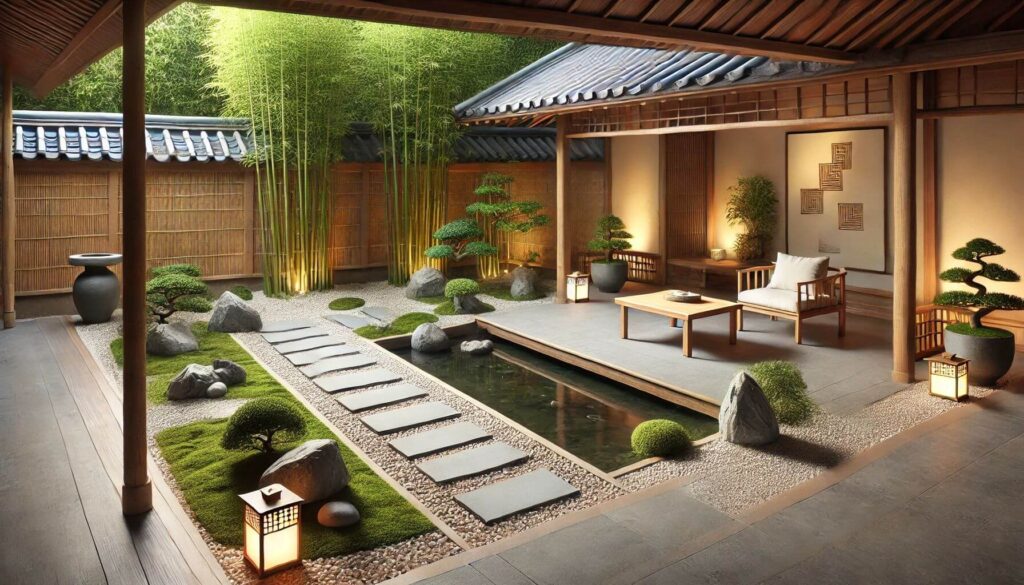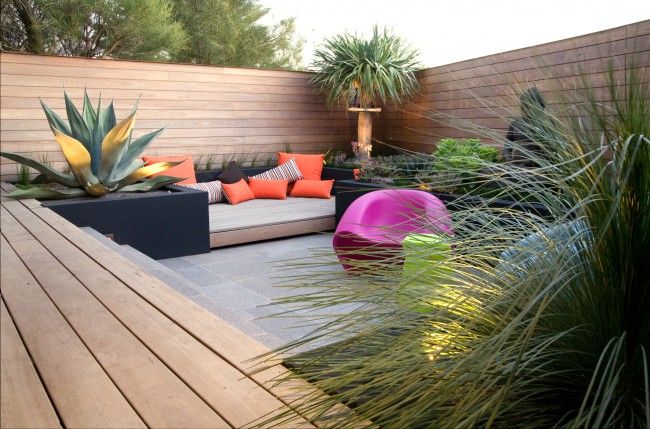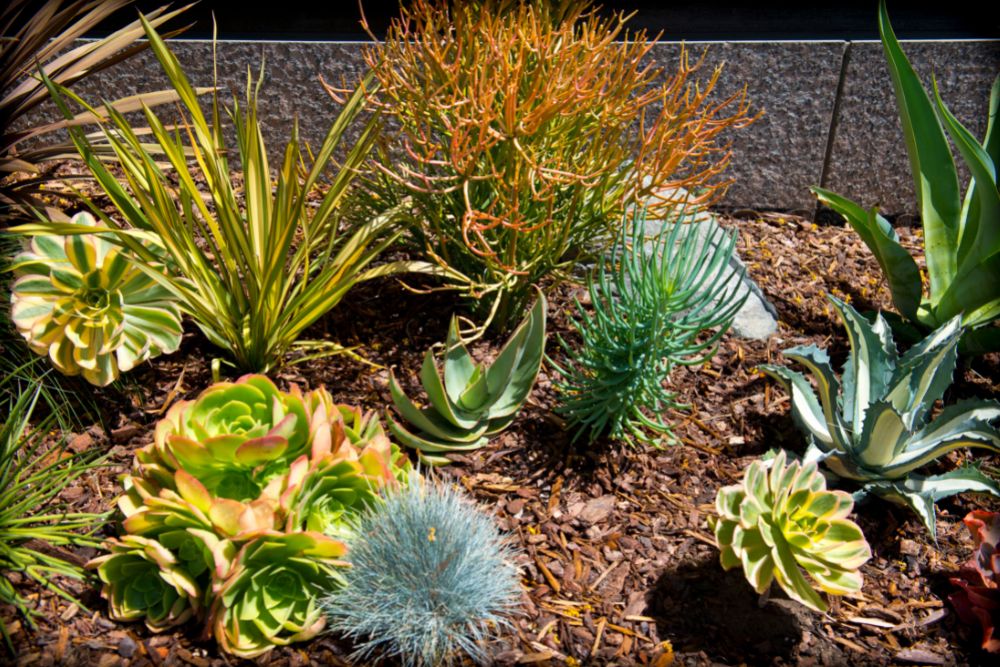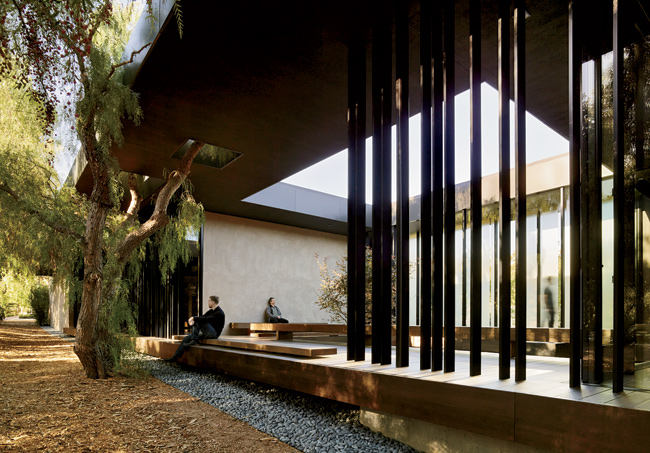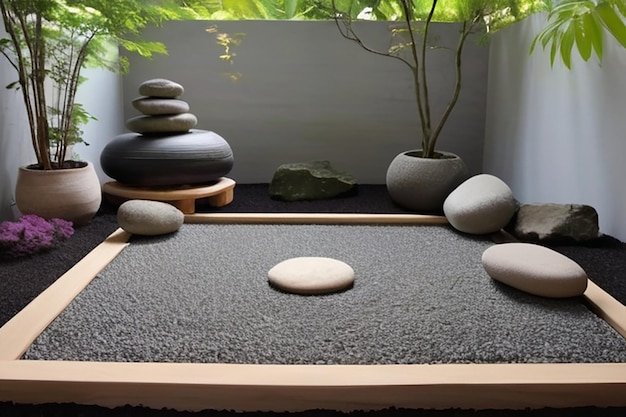
Introduction: Finding Peace in Your Own Backyard
In today’s fast-paced world, finding moments of peace and tranquility can feel like a luxury. The constant barrage of information, the demands of work and family, and the ever-present digital connection can leave us feeling stressed, overwhelmed, and disconnected from ourselves. But what if you could create a sanctuary, a haven of calm, right in your own backyard? A meditation garden offers just that – a dedicated space for reflection, mindfulness, and inner peace.
This comprehensive guide will walk you through every step of designing a meditation garden, from initial planning and choosing the right location to selecting plants, incorporating water features, and adding personal touches that resonate with your soul. Whether you have a sprawling estate or a small balcony, you can create a space that nurtures your spirit and helps you cultivate a sense of well-being.
Why Create a Meditation Garden? The Benefits of a Dedicated Sanctuary
Before diving into the practical aspects of design, let’s explore the profound benefits of having a dedicated meditation garden:
- Stress Reduction: Spending time in nature has been proven to lower cortisol levels (the stress hormone) and promote relaxation. A meditation garden amplifies this effect, providing a focused environment for calming the mind and body.
- Improved Mental Clarity: The peaceful atmosphere of a meditation garden can help clear mental clutter, allowing you to think more clearly and make better decisions.
- Enhanced Mindfulness: By creating a space dedicated to meditation, you’re more likely to practice mindfulness regularly. The garden becomes a visual cue, reminding you to take a break from the chaos of daily life and connect with the present moment.
- Increased Creativity: Nature is a powerful source of inspiration. A meditation garden can spark creativity and help you tap into your inner artist.
- Emotional Well-being: Connecting with nature can boost your mood, reduce feelings of anxiety and depression, and promote a sense of overall well-being.
- Physical Health: Spending time outdoors increases your exposure to Vitamin D, which is essential for bone health and immune function. Gardening itself is also a form of exercise that can improve your physical fitness.
- Connection with Nature: In an increasingly urbanized world, a meditation garden provides a vital connection to the natural world, reminding us of our place within the larger ecosystem.
Step-by-Step Guide to Designing Your Meditation Garden
1. Defining Your Intention: What Do You Want to Achieve?
Before you start digging in the dirt or sketching out designs, take some time to clarify your intention. What do you hope to achieve with your meditation garden? Are you seeking a place for quiet contemplation, a space for yoga and movement, or a sanctuary for healing and rejuvenation? Defining your intention will help you make informed decisions about every aspect of the design, from the layout and plant selection to the choice of materials and decorative elements.
Consider these questions:
- What kind of meditation practices do you enjoy?
- What emotions do you want to cultivate in your garden (e.g., peace, joy, gratitude)?
- What sensory experiences are most calming and grounding for you (e.g., the sound of water, the scent of lavender, the feel of smooth stones)?
- How much time do you realistically have to dedicate to maintaining the garden?
2. Choosing the Right Location: Finding Your Sanctuary’s Heart
The location of your meditation garden is crucial. Ideally, you want to choose a spot that is relatively quiet, secluded, and free from distractions. Consider these factors:
- Noise Levels: Avoid areas near busy streets, noisy neighbors, or loud machinery. If noise is unavoidable, consider using natural sound barriers like trees, shrubs, or a water feature.
- Privacy: Choose a location that offers a sense of privacy and seclusion. This could be a secluded corner of your yard, a hidden courtyard, or even a small balcony screened with plants.
- Sunlight: Observe how sunlight falls on the area throughout the day. Different plants have different sunlight requirements, so choose a location that provides the appropriate amount of light for the plants you want to grow.
- Wind: Consider the prevailing wind direction. Strong winds can be disruptive and uncomfortable. If necessary, create windbreaks with trees, shrubs, or fences.
- Accessibility: Make sure the location is easily accessible from your house. You want to be able to visit your meditation garden regularly, so choose a spot that is convenient and inviting.
- Existing Features: Take advantage of any existing features in your yard, such as mature trees, natural rock formations, or existing water sources. These can add character and depth to your garden.
3. Designing the Layout: Creating a Flow of Energy
The layout of your meditation garden should be designed to promote a sense of peace and harmony. Consider these principles:
- Simplicity: Keep the design simple and uncluttered. Avoid overcrowding the space with too many features or plants.
- Balance: Strive for balance in the design. This doesn’t necessarily mean perfect symmetry, but rather a sense of visual equilibrium.
- Flow: Create a sense of flow and movement through the garden. Use pathways, curves, and changes in elevation to guide the eye and encourage exploration.
- Focal Points: Incorporate focal points to draw the eye and create visual interest. This could be a statue, a water feature, a unique plant, or a beautiful rock.
- Seating: Provide comfortable seating where you can relax and meditate. This could be a bench, a hammock, a cushion on the ground, or even a comfortable chair.
- Pathways: Pathways should be made of natural materials like gravel, stepping stones, or mulch. Avoid using concrete or asphalt, which can feel harsh and unnatural.
4. Choosing the Right Plants: Creating a Sensory Experience
The plants you choose for your meditation garden will play a crucial role in creating the desired atmosphere. Consider these factors:
- Fragrance: Choose plants with calming and uplifting fragrances, such as lavender, jasmine, chamomile, and rosemary.
- Color: Use color to create a specific mood. Cool colors like blue, green, and purple are generally more calming, while warm colors like red, orange, and yellow can be energizing.
- Texture: Incorporate a variety of textures to create visual interest and stimulate the senses. Consider the feel of smooth stones, soft moss, and feathery grasses.
- Sound: Choose plants that rustle gently in the wind, such as bamboo or ornamental grasses. The sound of leaves whispering can be incredibly soothing.
- Symbolism: Consider the symbolic meaning of different plants. For example, bamboo represents resilience, lotus flowers symbolize purity, and ferns represent humility.
- Maintenance: Choose plants that are relatively low-maintenance and well-suited to your climate. You don’t want to spend all your time weeding and watering.
Here are some popular plant choices for meditation gardens:
- Lavender: Known for its calming fragrance and beautiful purple flowers.
- Jasmine: A fragrant vine with delicate white flowers.
- Chamomile: A soothing herb that can be used to make tea.
- Rosemary: A fragrant herb with a variety of culinary and medicinal uses.
- Bamboo: A tall, graceful grass that rustles gently in the wind.
- Japanese Maple: A beautiful tree with vibrant red foliage.
- Ferns: Lush, green plants that thrive in shady areas.
- Moss: A soft, velvety ground cover that creates a peaceful atmosphere.
- Lotus Flowers: Symbolic of purity and enlightenment, these aquatic plants add a touch of serenity to any water feature.
5. Incorporating Water Features: Adding the Sound of Serenity
Water features are a classic element of meditation gardens. The sound of flowing water is incredibly soothing and can help to drown out distracting noises. Consider these options:
- Fountains: Choose a fountain that is aesthetically pleasing and produces a gentle, calming sound.
- Ponds: A small pond can be a beautiful addition to a meditation garden. Consider adding fish, aquatic plants, and a small waterfall.
- Streams: A meandering stream can create a sense of movement and flow through the garden.
- Bird Baths: Attract birds to your garden with a bird bath. The sight and sound of birds can be incredibly uplifting.
- Rain Chains: Replace your traditional downspouts with rain chains. The sound of water cascading down the chains can be very relaxing.
6. Adding Decorative Elements: Personalizing Your Sanctuary
Decorative elements can add a personal touch to your meditation garden and enhance its overall aesthetic appeal. Consider these options:
- Statues: Choose statues that resonate with you and your spiritual beliefs. Buddha statues, angel statues, and animal statues are all popular choices.
- Rocks: Use rocks of different sizes and shapes to create visual interest and add a natural element to the garden.
- Crystals: Place crystals in your garden to amplify its energy and promote healing.
- Wind Chimes: Choose wind chimes that produce a gentle, soothing sound.
- Lanterns: Use lanterns to create a warm and inviting atmosphere in the evening.
- Prayer Flags: Hang prayer flags to promote peace, compassion, and good fortune.
- Personal Mementos: Add personal mementos that have special meaning to you, such as photographs, artwork, or objects from nature.
7. Creating a Sensory Experience: Engaging All Your Senses
A well-designed meditation garden should engage all your senses. Consider these tips:
- Sight: Use a variety of colors, textures, and shapes to create visual interest.
- Sound: Incorporate water features, wind chimes, and plants that rustle in the wind.
- Smell: Choose plants with fragrant flowers and foliage.
- Touch: Incorporate a variety of textures, such as smooth stones, soft moss, and rough bark.
- Taste: Plant edible herbs and flowers that you can use in your cooking or teas.
8. Maintaining Your Meditation Garden: Nurturing Your Sanctuary
Maintaining your meditation garden is essential for preserving its beauty and tranquility. Consider these tips:
- Weeding: Regularly weed your garden to prevent unwanted plants from taking over.
- Watering: Water your plants regularly, especially during dry periods.
- Pruning: Prune your plants to keep them healthy and attractive.
- Fertilizing: Fertilize your plants regularly to provide them with the nutrients they need to thrive.
- Cleaning: Clean your water features regularly to prevent algae growth.
- Mulching: Mulch your garden beds to retain moisture, suppress weeds, and improve soil health.
Design Ideas for Different Spaces
Meditation Garden Ideas for Small Spaces
Even if you only have a small balcony or patio, you can still create a beautiful and functional meditation garden. Here are some ideas:
- Vertical Garden: Create a vertical garden using trellises, hanging baskets, or wall-mounted planters.
- Container Garden: Use containers of different sizes and shapes to create a miniature garden.
- Miniature Zen Garden: Create a miniature Zen garden using sand, rocks, and small plants.
- Water Feature: Incorporate a small water fountain or bird bath.
- Seating: Use a small bench, a comfortable chair, or a cushion on the ground.
Meditation Garden Ideas for Large Spaces
If you have a large yard, you have more freedom to create a elaborate meditation garden. Here are some ideas:
- Multiple Zones: Create different zones within your garden for different activities, such as meditation, yoga, and relaxation.
- Walking Path: Create a winding walking path through the garden.
- Water Feature: Incorporate a large pond, stream, or waterfall.
- Gazebo or Pergola: Add a gazebo or pergola to provide shade and shelter.
- Fire Pit: Add a fire pit for warmth and ambiance.
Zen Garden Design Ideas
Zen gardens are designed to promote peace, tranquility, and contemplation. Here are some key elements of Zen garden design:
- Simplicity: Keep the design simple and uncluttered.
- Asymmetry: Avoid perfect symmetry.
- Natural Materials: Use natural materials like sand, rocks, and wood.
- Raked Sand: Rake the sand to create patterns that represent water.
- Rocks: Use rocks to represent mountains or islands.
- Moss: Use moss to create a sense of age and tranquility.
- Minimalism: Avoid unnecessary ornamentation.
Common Mistakes to Avoid When Designing a Meditation Garden
Designing a meditation garden can be a rewarding experience, but it’s important to avoid common mistakes that can detract from its tranquility and functionality. Here are some pitfalls to watch out for:
- Neglecting the Initial Planning: Jumping into planting and construction without a clear plan can lead to a disorganized and unsatisfying result. Take the time to define your intentions, assess your space, and create a detailed design before you start.
- Ignoring the Environment: Failing to consider factors like sunlight, wind, and soil type can result in unhealthy plants and an uncomfortable environment. Choose plants that are well-suited to your local climate and take steps to mitigate any environmental challenges.
- Overcrowding the Space: Filling your garden with too many plants, decorations, or features can create a sense of clutter and overwhelm. Embrace simplicity and prioritize elements that contribute to a sense of peace and harmony.
- Neglecting Maintenance: A neglected garden can quickly become overgrown and uninviting. Establish a regular maintenance routine to keep your garden looking its best.
- Failing to Personalize the Space: Your meditation garden should be a reflection of your own personality and spiritual beliefs. Don’t be afraid to add personal touches that make the space feel like your own.
- Ignoring the Senses: A truly immersive meditation garden engages all the senses. Don’t forget to consider the sounds, smells, textures, and even tastes that will enhance your experience.
- Underestimating the Power of Water: Water features can add a sense of tranquility and movement to your garden. Even a small bird bath or fountain can make a big difference.
Conclusion: Your Personal Oasis Awaits
Creating a meditation garden is an investment in your well-being. It’s a space where you can reconnect with nature, quiet your mind, and cultivate inner peace. By following the steps outlined in this guide, you can create a sanctuary that nourishes your soul and helps you live a more mindful and fulfilling life. So, take a deep breath, gather your inspiration, and start designing your personal oasis today. The journey to inner peace begins in your own backyard.
